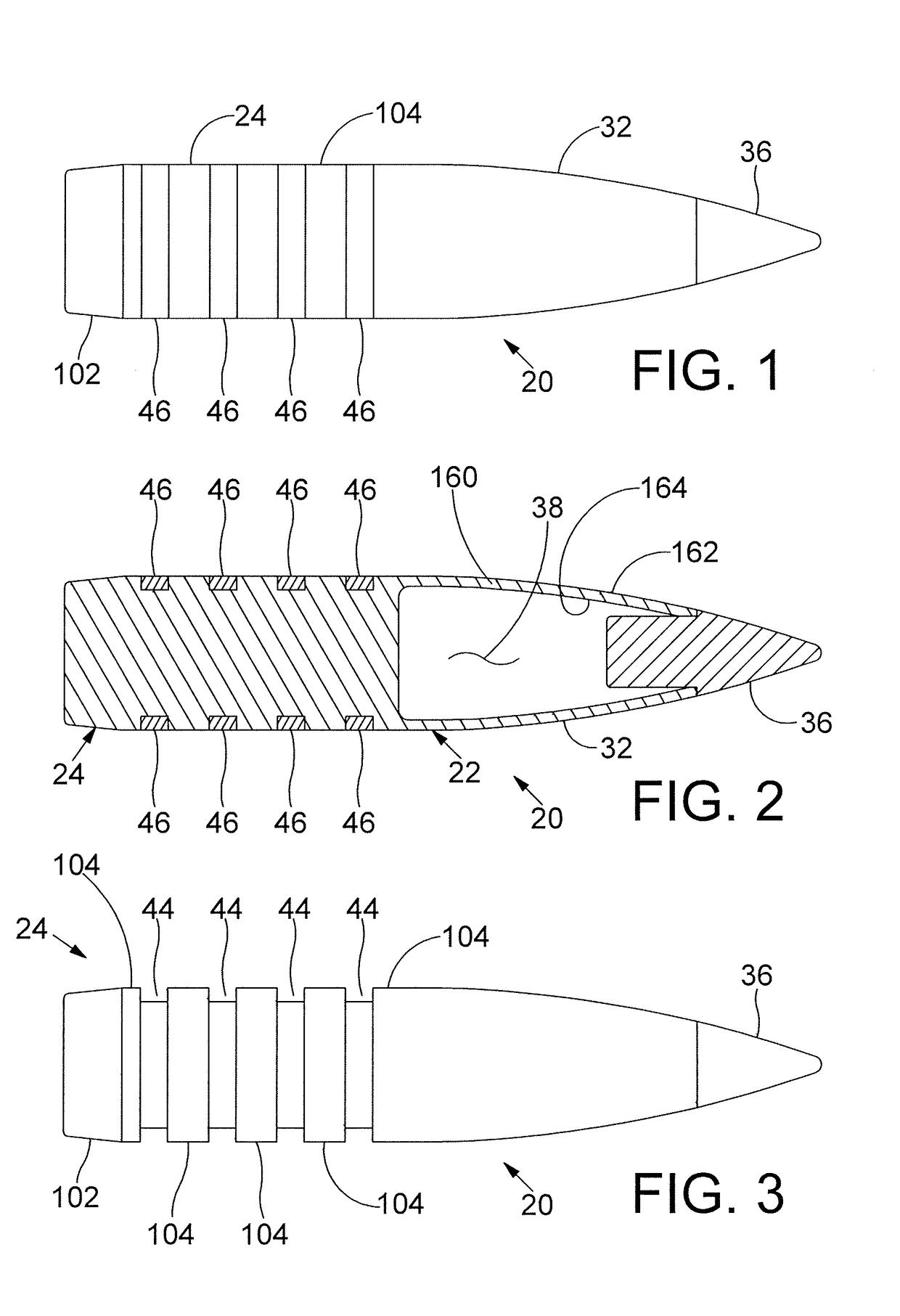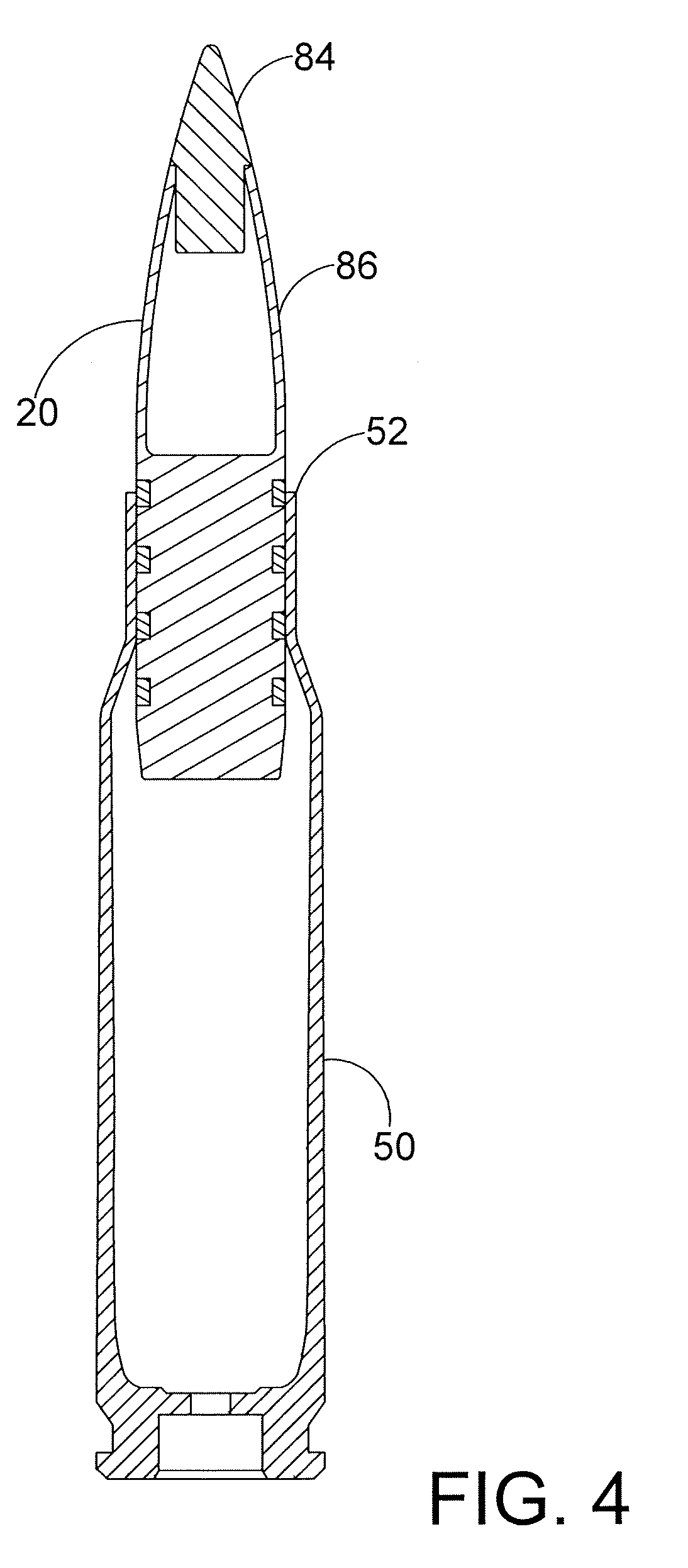Reduced drag projectiles
a projectile and drag technology, applied in the field of low caliber firearm bullets, can solve the problems of increased drag in the air of bullets, increased blood loss, and inability to commercialize bullets with grease grooves, and achieve the effect of reducing the needed energy to deform, reducing the need for energy, and reducing the surface area
- Summary
- Abstract
- Description
- Claims
- Application Information
AI Technical Summary
Benefits of technology
Problems solved by technology
Method used
Image
Examples
Embodiment Construction
[0069]Referring to FIGS. 1-3, a side view of rifle bullet 20 is depicted according to one or more embodiments. The bullet 20 has a body 22 with a main body portion 24 and a nose portion 32. In one or more embodiments, the main body portion 24 comprises a tail portion 102 and a barrel engaging portion 104. Additionally, the bullet 20 may include a polymer tip 36 in a forward cavity 38 of the nose portion 32. The bullet main body portion and nose portion in one or more embodiments are monolithic. In one or more embodiments, the bullet 20 has one or more circumferentially extending grooves 44. The grooves having polymer bands 46 therein formed by overmolding. The grooves may have “square” corners but also other shapes including an undercut shape are within the scope of the invention. That is, the cross section of the groove and the band molded therein may be, by way of example and not limitation, trapezoidal shaped in lateral cross-section and / or a C-shape cut. The grooves are contempl...
PUM
 Login to View More
Login to View More Abstract
Description
Claims
Application Information
 Login to View More
Login to View More - R&D
- Intellectual Property
- Life Sciences
- Materials
- Tech Scout
- Unparalleled Data Quality
- Higher Quality Content
- 60% Fewer Hallucinations
Browse by: Latest US Patents, China's latest patents, Technical Efficacy Thesaurus, Application Domain, Technology Topic, Popular Technical Reports.
© 2025 PatSnap. All rights reserved.Legal|Privacy policy|Modern Slavery Act Transparency Statement|Sitemap|About US| Contact US: help@patsnap.com



